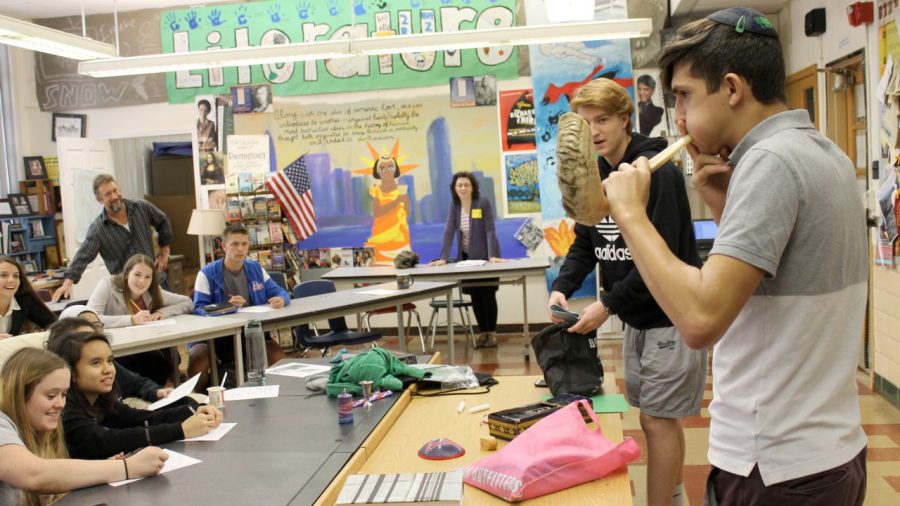These St. Louis teens are at the forefront of fighting antisemitism
In a 2017 file photo, David Feit Mann, then a sophomore at Yeshiva Kadmiah High School, closed a Student to Student presentation for an AP English class at Affton High School by explaining how a ram’s horn is used in Judaism. Photo: Eric Berger
Published January 4, 2023
In 2021, the Anti-Defamation League (ADL) found that over 2,717 anti-Semitic incidents were reported in the United States. This number is a 34% increase from the previous year. At the forefront of this rise of antisemitism, are Jewish teenagers.
Rylie Fine, a senior at Eureka High School, has had several encounters with antisemitism.
“I go to school where I am the only Jewish student,” Fine said. “I’ve gotten comments from people asking me where my horns are, and since I go to a Jewish camp, ‘Is that like a concentration camp?’”
Ilana Boyer, a senior at Whitfield, has also been affected by this rise in antisemitism.
“An instance that affected me was witnessing someone doing the Nazi salute,” Boyer said.
Over the past few years, many have noticed a drastic increase in antisemitism. Lauren Abraham, director of Student to Student, a classroom-based program that brings Jewish and non-Jewish high school students together, reflected on how antisemitic comments have escalated. She credited this rise in hateful comments to the prominence of social media today.
“It used to be someone saying a dirty Jew joke, seeing a Jewish star and saying something about it, or saying something about one’s kippah,” Abraham said. “I feel like [antisemitism] has spiraled out of control with the rise of social media.”
Student to Student is a program of the Jewish Community Relations Council (JCRC), which allows Jewish students to teach their non-Jewish peers about Judaism.
“The mission of Student to Student is to break down barriers,” Abraham said.
Earlier this year, Kanye West and Kyrie Irving, two influential people in American pop culture, made antisemitic remarks that shook the Jewish community.
“When [West and Irving] say these things, it’s a bad model for the teenagers and kids of our society, who are the future of tomorrow,” Fine said.
West and Irving were able to spread their antisemitic views via social media due to a lack of online censorship. In 2021, the British Broadcasting Corporation (BBC) found that 80% of antisemitic posts on social media were not taken down.
“People can post anything without it being fact-checked,” Boyer said. “Kanye West was able to tweet whatever he wanted before his [Twitter] got suspended.”
Many Jewish individuals believe that the main reason for antisemitism is ignorance and a lack of education.
“It mostly comes from ignorance,” Abraham said. “People don’t know, a lot of them have never met a Jew or know anything about Judaism.”
Fine and Boyer are members of the Student to Student program. As an active participant of the organization, Boyer believes that Student to Student plays an integral part in combating antisemitism.
“[Student to Student] teaches (about) antisemitism and Jewish struggles to the non-Jewish community, who might not have known about it,” Boyer said.
Fine works closely with her peers to facilitate conversations about how to respond to antisemitic hostilities.
“The way I try to end antisemitism is by educating my friends and the peers around me about Judaism so that when they hear these microaggressions and discriminations, they can go and combat it themselves,” Fine said.
Despite this rise in antisemitism, Boyer and Fine expressed optimism for the future.
“I think with the right tools, education and people combating antisemitism, it makes me hopeful,” Boyer said.
















